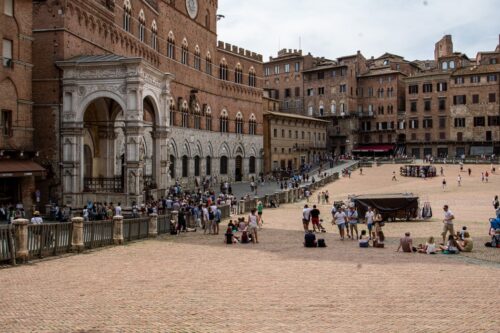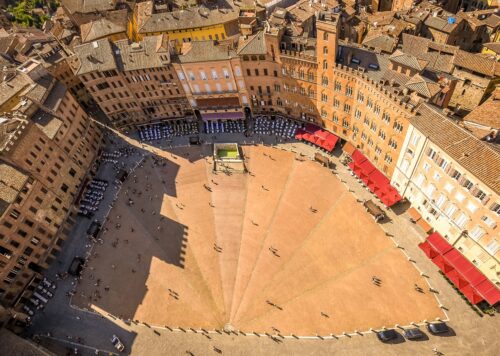Piazza del Campo
Piazza del Campo is a magnificent square at the heart of Siena. This site revolutionized the idea of the medieval Italian piazza, having no spatial restrictions or conventional shape nor any symbolic balance of secular and religious power. Conceived on a fragile and muddy piece of land, where the narrow streets of the old city converge, the piazza was a major urban planning problem for Siena.
The square was completely reclaimed during the Roman era, remaining, however, a suburban center. The initial nucleus of the city was higher, in the Castelvecchio area. The future Campo was just a space for markets, off the main connecting roads that passed through the city.
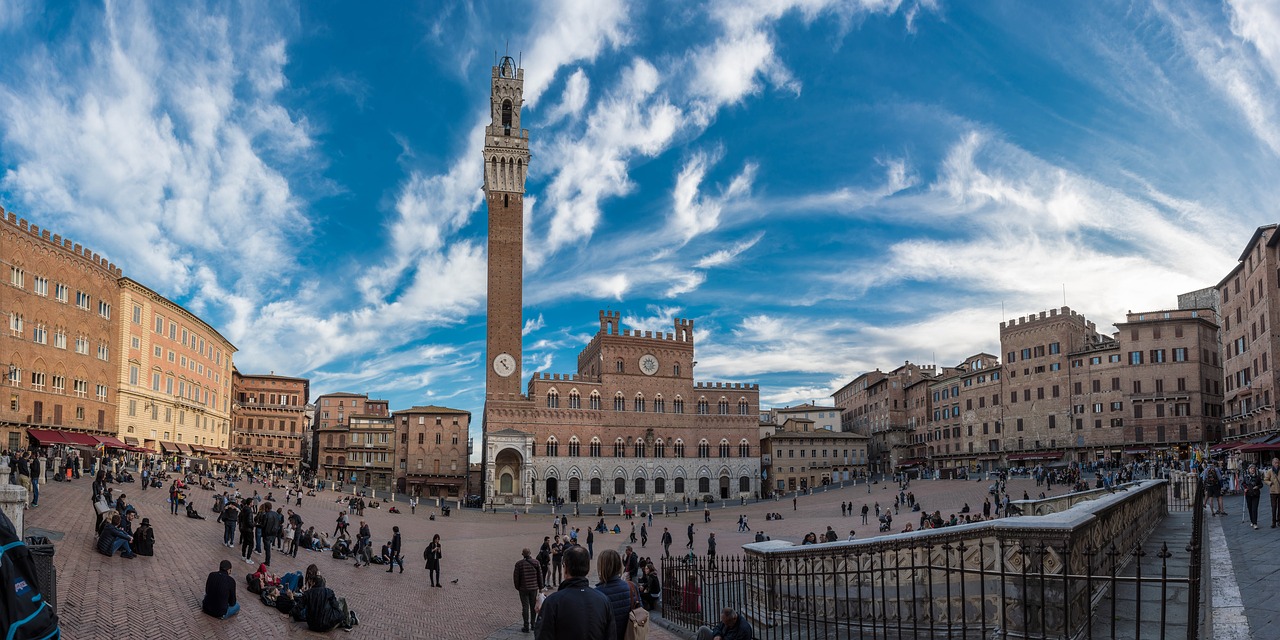
The first document mentioning the layout of the Campo was written in 1169 and refers to the entire valley including the current piazza and the Piazza del Mercato – which today is behind the Palazzo Comunale. At that time, the Sienese council bought the land stretching from the current Loggia della Mercanzia to the current Piazza del Mercato – Market Place.
The first mention of a subdivision between the two piazzas was in 1193. From this, we can deduce that a dividing wall had been built. On one side this gave the Campo its unique conch shell shape, on the other side the Mercato. Within the wall, small factories and workshops started springing up. Until 1270, the site of the piazza was used for fairs and markets.
The end of the aristocratic despotism of the Rule of the Twenty-four – allowed the development of a space independent of both ecclesiastic and aristocratic power. This finally became the grand civic project ending with the construction of the Palazzo Pubblico and, consequently, the urban nucleus of the Campo. The Nove slowly got the project off the ground.
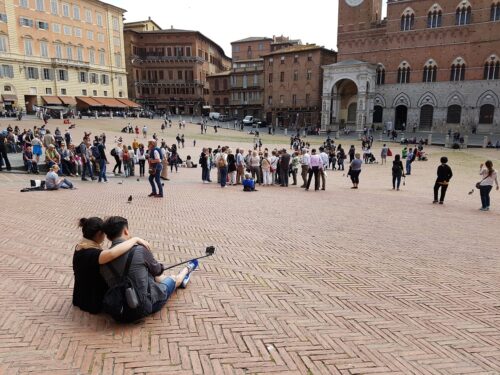
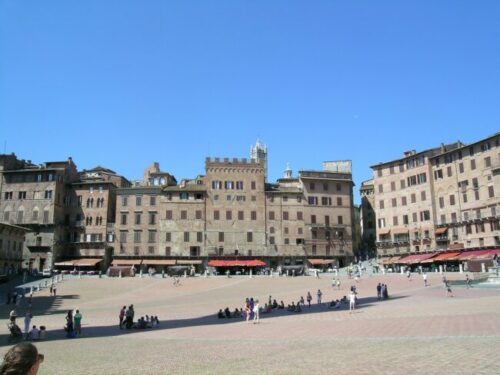
The Palazzo was completed at the beginning of the fourteenth century and the Nove took up residence there in 1310. From then, the Piazza was progressively embellished and improved. The surfacing of the piazza began in 1327 and finished in 1349. Even today, the center is unchanged, subdivided into nine segments in commemoration of the Nove.
The Campo is square-shaped like a conch shell, surrounded by grand medieval buildings. Centuries later, these buildings have been deprived of some details, but their overall design remains. Indeed, apart from minor alterations to the buildings, the piazza as a whole has remained as it is for almost seven centuries. A project to crown the Piazza di Logge, designed by Baldassare Peruzzi, was shelved in the sixteenth century.
Description / More sienaguidavirtuale. it
